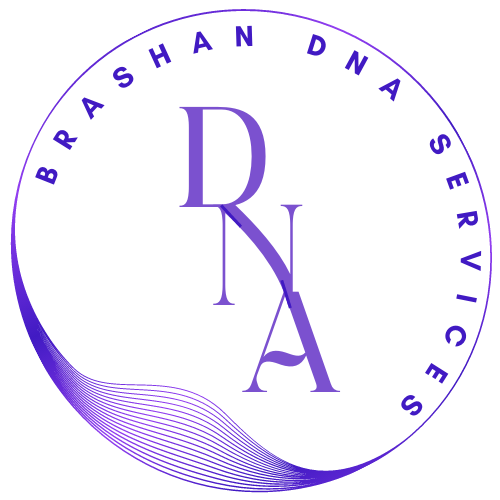To answer this question, it is important to first discuss how scientists arrive at their conclusion after analysing given DNA samples. The mother may or may not submit her DNA for analysis, even though it is better if she did. The chance of paternity is calculated as a percentage and indicates the probability of paternity based on the complete DNA test results obtained from submitted samples.
The DNA samples are sequenced to give a list of DNA locations when they arrive at the laboratory. Each location from each participant has a pair of numbers. A child’s pair of numbers come from one number from the mother and the second number from the father.
When the child’s list of paired numbers is compared with the mother’s and there should be a match at each location. The column of numbers that match the mother’s numbers is then excluded to leave the second column as the child’s numbers for comparison. The child’s second number on the second column at each location is then compared with the father’s list of paired numbers at each location.
If the child’s second numbers on the child’s column match the alleged father paired numbers and statistical calculation shows a 99.99% chance, then the sample donor ‘cannot be excluded as the father’. This infers that when compared with all other men of the same ethnicity, the man whose sample was analysed has 99.99% of being the biological father of the child. It is important to note that if there is a chance that a relative of the alleged father may be the biological father of the child, then this must be disclosed before testing so that it can be added to the calculation. If, however, there is no match and the statistical calculation gives 0% probability, then the man is ‘excluded as the father’ and the conclusion is that the man is not the biological father of the child.
Since Paternity DNA testing is based on a statistical conclusion of the probability of paternity, it cannot be 100% accurate. Getting 100% accurate results will require testing every man of the same ethnicity on the planet to be able to exclude them. Also, since identical twins have the same DNA, it will be impossible to identify which twin is the biological father of a child. 99.999% accurate result is the best outcome that can be scientifically defended.
Erase any doubt you may have about your paternity or your child(ren) with a Paternity DNA test from Brashan DNA Services Limited. Our lab offers 99.999% accurate results and same-day, or next-day results are available.
Phone
Location
Store Hours
M-F: 8am – 8pm
S-S: 8am – 8pm
